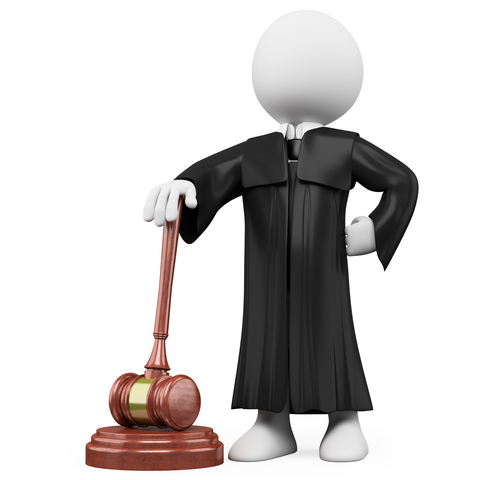Niqabs have attracted much attention in the last few years. Bans and debates about them are everywhere. On Thursday, December 8, 2011, the Supreme Court heard argument about whether a witness, NS, should be permitted to wear a niqab while testifying at a preliminary hearing.
NS is the complainant in a sexual assault proceeding of two men, her uncle and cousin. At the preliminary inquiry the accused sought to have her remove her niqab. The preliminary inquiry judge conducted an informal inquiry into the reasons for the niqab. This inquiry took place without NS having had an opportunity to speak to counsel or seek advice - something the Crown suggested should have taken place. Ultimately the preliminary inquiry judge ordered that she remove the niqab.
NS sought relief by way of extraordinary remedy in the Superior Court. While that court quashed the order it also remitted it back to the preliminary inquiry judge for reconsideration:
2009 CarswellOnt 2268 (SCJ). NS appealed that order to the Ontario Court of Appeal. That Court also ordered that the initial order of the preliminary inquiry judge be quashed. That court also, however, sent the matter back to the preliminary inquiry judge for reconsideration:
2010 ONCA 670. NS appealed to the
Supreme Court. That Court has reserved.
The interest and controversy over this issue is apparent from the number and scope of parties that had status at the Supreme Court. In addition to NS, the accused and the Crown, the following "other parties" had status:
-
Ontario Human Rights Commission
-
Barbra Schlifer Commemorative Clinic
-
Criminal Lawyer's Association (Ontario)
-
Muslim Canadian Congress
-
South Asian Legal Clinic of Ontario
-
Barreau du Quebec
-
Canadian Civil Liberties Association
-
Women's Legal Education and Action Fund
-
Canadian Council on American Islamic Relations
The issue is complicated. The views are extreme and the debate is passionate. Consider, for example, the view set out by the
Muslim Canadian Congress (one of the parties) on their website:
THE MCC dismissed the argument that wearing of a face-mask by Muslim women is protected by the Charter's guarantee of religious freedom. The MCC said, there is no requirement in the Quran for Muslim women to cover their faces. Invoking religious freedom to conceal one's identity and promote a political ideology, is disingenuous.
The ruling could have significant impact. Its implications will likely go beyond the specific issue before the Court.
For now, the ruling that governs the issue is from the Court of Appeal.
The Court of Appeal first dealt with the issue of the powers of the reviewing and appellate court. The court clarified that while only jurisdictional errors are reviewable where the Crown or the accused is the moving party, where a third party is involved the reviewing court may consider both errors of law and jurisdiction:
However, where the moving party on the extraordinary remedy application is a "third party", that is a party other than the accused or the Crown, and the challenged order finally decides the rights of the third party, extraordinary remedy relief will lie on the mroe traditional grounds of both jurisdictional error and error of law on the face of the record: Cunningham v. Lilles (2010), 254 C.C.C. (3d) 1 (S.C.C.), at paras. 57-58; Dagenais v. Canadian Broadcasting Corp., [1994] 3 S.C.R. 835 (S.C.C.), at pp. 864-67 [para 23].
The court further explained that the reviewing standard is correctness.
Turning to the issue of the jurisdiction or power of the preliminary inquiry judge the court held that the judge did not have remedial jurisdiction under the Charter but could consider Charter values "when exercising statutory powers granted" [para 29]. Accordingly, the court held, the preliminary inquiry judge had the jurisdiction, to control its proceedings, to consider the issue, taking into account Charter values, and decide the issue.
Turning to the correctness of the decision made, the court held that as a first step the court must assess the genuineness of the witness' claim. If the witness has advanced "a valid religious right claim" then the judge must move to the next inquiry [para 71]. The second inquiry will be to determine the extent, it at all, the wearing of the niqab would interfere with the ability to cross-examine [para 71]. If the court finds that both interests are sufficiently engaged a balance of the competing interests must be undertaken in a contextual manner [paras 73-74].
In the present case the court held that the preliminary inquiry judge erred. The judge erred by failing to make a full and formal inquiry in the religious belief and failed in not providing the witness an opportunity to consult counsel prior to the inquiry [paras 90-94].
The court then ordered the matter returned to the preliminary inquiry judge for the purpose of making the inquiry outlined and a decision based thereon.
DG Mack
 Ripudaman Singh Malik was acquitted in the "Air India Trial". Malik spent four years in custody prior to the acquittal. The trial cost his approximately $9.2 million. After his acquittal Malik sought to have the Crown reimburse these costs.
Ripudaman Singh Malik was acquitted in the "Air India Trial". Malik spent four years in custody prior to the acquittal. The trial cost his approximately $9.2 million. After his acquittal Malik sought to have the Crown reimburse these costs.

